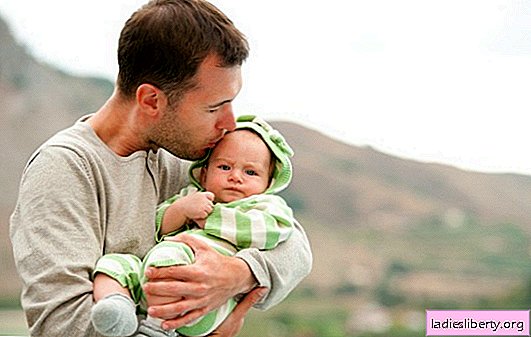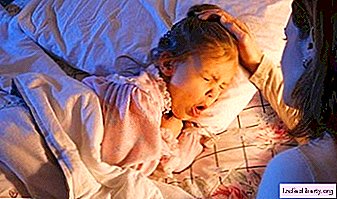
The problem of carrying a fetus or the inability to become pregnant is quite acute for many patients. And no matter what caused the pathology, women do not cease to look for ways to eliminate deviations to achieve the cherished dream - motherhood.
One of the safest, but effective methods of diagnosis and treatment of gynecological pathologies is laparoscopy. Women who decide to undergo such surgery are concerned about the questions: what problems can the surgery eliminate and when will pregnancy occur after laparoscopy?
What difficulties with pregnancy are solved with the help of laparoscopy?
In addition to routine examinations, various laboratory tests, ultrasound examinations, colposcopy, hysteroscopy, hysterosalpingography, ultrasound hysterosalpingoscopy are used to diagnose women's diseases in gynecology. But even these methods do not give a detailed picture, guaranteed to confirm some diseases. H
To look inside and, moreover, to eliminate possible pathologies, a few years ago it was possible only with the help of abdominal surgery. But this method is very traumatic for the genital organs and requires a long recovery period for the possibility of planning a pregnancy, and in some cases deprived women of this ability in general.
The uniqueness of laparoscopy is manifested in the combination of the following factors:
1. Careful reliable diagnosis and safe elimination of pathologies identified during the examination.
2. Minimal injury of tissues and organs, which is expressed in a pair of punctures for the introduction of optical equipment and medical instruments, allows the body to quickly recover from the intervention, does not leave unaesthetic scars on the body.
3. The presence of optical devices in the abdominal cavity, increasing the abdominal space due to the introduction of carbon dioxide, displaying the image on the screen, which allow the doctor to find out the causes of pathology and immediately eliminate it.
With the help of laparoscopy, many gynecological problems are solved, including those that are factors of infertility.
Uterine myoma
A benign tumor formed in the uterus against the background of hormonal changes is an obstacle to the successful conception. The danger is that the pathology in the initial stages does not manifest itself. Only with a significant increase appear deviations in the menstrual cycle, leading to infertility. Possible discomfort associated with an increase in the uterus. In advanced cases it is not always possible to preserve the uterus, as an organ or its functional abilities. Therefore, early diagnosis and removal of formations are necessary, with which laparoscopy does an excellent job, leaving a woman a chance to experience the joys of motherhood.
Cystic formations
Common ovarian pathology - cystic formations. Can appear both inside the body and outside. When a functional cyst is formed from the connective tissue of the ovary, physicians observe for several menstrual cycles. During this time, usually such an entity resolves without intervention. With the organic origin of formations there is a risk of rupture of the body, which requires mandatory removal. Polycystic, manifested by multiple formations on the surface of the ovaries, also requires intervention. In addition, cystic formations are reflected in hormonal background due to disruption of the functioning of the ovaries. Laparoscopy allows you to remove only the pathological formation itself, without disturbing the integrity of the ovary, which in a short time completely restores its natural functions and enables pregnancy after laparoscopy.
Fallopian tube obstruction
In 35% of cases of infertility pathology of the fallopian tubes is to blame. Decreased muscle activity, narrowing of the lumen prevent free penetration of the egg into the uterus. Obstruction of the lumen is fraught with ectopic pregnancies, which previously led to the removal of one of them. With the help of laparoscopy, pathology of the fallopian tubes is successfully corrected, which manifests itself in the form of:
• congenital fallopian tube defects;
• ectopic pregnancies and their complications;
• polyposis of the fallopian tubes;
• tumor growths, myomas, uterine fibroids, which are located next to the fallopian tubes and block the lumen, patency;
• peritubar adhesions of fallopian tubes.
Endometriosis
Pathological proliferation of the uterine mucosa, both inside and outside of it over time with no proper treatment, takes up as much free space as possible. Of course, this process is opposed to normal pregnancy. After laparoscopy with endometriosis, all excess flesh can be removed in the early stages of the pathology.
Spikes
The formation of connective tissue adhesions occurs under the influence of inflammatory processes and previous surgical interventions. These formations inhibit reproductive ability. You can eliminate the pathology with the help of laparoscopy.
Pregnancy after laparoscopy: timing and odds
Do not forget that laparoscopy, although a little traumatic, but still intervention in the activity of the body. And as after any operation it takes time to recover. Despite the fact that a woman is allowed to move several hours after the procedure and is discharged from the hospital for 5-7 days, weakened immunity takes time to recover and the ability to engender and endure a new life.
The functions of the reproductive organs after laparoscopy return to normal in just a few days, but doctors recommend refraining from intimate relationships for the next 30 days.
The ideal period for pregnancy after laparoscopy is the time after 3 months. During this period, postoperative stitches have time to heal, inflammation subsides, hormones are restored.
But there are deviations that relate to the removal of certain pathologies:
1. After ectopic pregnancies, removal of fibroids, pregnancy after laparoscopy is recommended no earlier than six months.
2. Dissection of massive adhesions postpones pregnancy after laparoscopy, also for six months.
3. Removal of malignant tumors requires a delay of at least a year.
As practice shows, up to 20% of women who have treated infertility with laparoscopy, waited for the long-awaited conception immediately after surgery. During the year, this possibility was realized in 85%.
If there is no result and after 12 months, the woman is offered a second intervention. In cases where the chances of getting pregnant are negligible or not at all, but the ovarian function is preserved, which was confirmed during laparoscopy, the woman has a chance to get pregnant using IVF.
Planning for pregnancy after laparoscopy
Immediately after surgery, the doctor may prescribe antiviral or anti-inflammatory drugs.
If the difficulties are associated with ovarian function, continues hormonal treatment.
After removal of adhesions required antibiotics and blood thinners to prevent the re-formation of adhesions.
If irregularities remain inside the uterus after the operation, hormonal preparations are used to improve the condition of the endometrium. Depending on the severity of the disease, various oral contraceptives are prescribed for a period of 3 to 12 months. Following the abolition of drugs, pregnancy after laparoscopy is possible immediately.
Possible application gonadotropins, introducing the body into a state of artificial menopause. In this case, all residues of hyperplasia and endometriosis are resolved. After the abolition of hormones to restore the cycle help oral contraceptives, which is used for three months. After the end of COC use, the probability of pregnancy after laparoscopy is high.
Anovulatory cycles may counter pregnancy after laparoscopy. Therefore recommended monitor basal temperature, track ovulation. You may need additional stimulation of ovulation medication.
The ability to conceive and gestation is influenced by many factors. Therefore, faced with the problem of pregnancy after laparoscopy, a woman needs to undergo a thorough examination. to identify the causes.
1. The unstable hormonal background that affects the child-bearing function will help restore the endocrinologist.
2. Deviations in weight in any direction affecting the hormonal level can be resolved with the help of dietitian recommendations.
3. The presence of infections that can affect conception will be determined by the infectious disease specialist. Depending on their origin, narrowly targeted specialists will be engaged in treatment.
4. Immune pathologies that force the destruction of spermatozoa as potential foreign agents will be identified by an immunologist.
When planning a pregnancy after laparoscopy, a survey of prospective parents is carried out, which consists of the following procedures and consultation:
• smear on microflora, STDs;
• ECG;
• blood tests, urine;
• conducting blood tests for hormones;
• consultation of the endocrinologist;
• consultation of a genetics doctor.
At the preparatory stage, it is recommended vitamin therapy, the revision of the diet, the exclusion of dangerous habits and a positive attitude, which is not in last place in the psycho-emotional state of a woman, on which the success of attempts to conceive a baby depends.
Gestation after laparoscopy
Early pregnancy after laparoscopy is fraught with complications. After removal of polycystic ovary there is a threat of interruption in the first months. Elimination of obstruction of the tubes can result in placental insufficiency. In addition, the level of immune protection of the future mommy remains low; continuation of inflammatory processesthat threatens the development of the fetus and is fraught with septic processes. Therefore, it is important to consult a gynecologist in time and get the necessary recommendations for avoiding unforeseen pathologies.
The condition of the woman is monitored during the entire pregnancy after laparoscopy. What is required for regular inspections, laboratory tests of blood, urine, control ultrasound examinations. Possible abdominal pathologies, including newly formed cysts found during pregnancy are also removed by laparoscopy.
Successful labor factors in pregnancy after laparoscopy
Laparoscopic surgery does not leave large scars on the uterus and abdomen, which cause rupture of the uterus during childbirth. For many women, delivery passes in a natural way. If doctors suggest some kind of danger, mostly not related to the previous laparoscopy, the woman is offered cesarean section. Weak labor activity in no way depends on laparoscopy, and may be due to the effects of polycystic.
Do not panic if the doctor recommends laparoscopy. This operation does not prevent you from getting pregnant, and in some cases is an effective way to get rid of the factors causing infertility.











